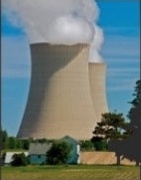Walla Walla will take part in a multiday event this week that will join Japanese and American victims of nuclear use and production.
Whitman College will present The Nagasaki-Hanford Bridge Project at 7 p.m. Wednesday in Maxey Auditorium on the school’s campus.
The featured speaker will be Mitsugi Moriguchi of Japan, a child on Aug. 9, 1945, when a plutonium bomb, code-named “Fat Man,” was dropped on the Japanese city of Nagasaki by the U.S. Armed Forces near the end of World War II.
As an A-bomb survivor, known as a “hibakusha,” and a member of the Nagasaki Atomic Bomb Testimonial Society, Moriguchi will recount what he and other survivors have lived through.
Now retired as an elementary school teacher, Moriguchi has made it his mission to ensure those stories and lessons are passed on to younger people.
Organizers of the “The Nagasaki-Hanford Bridge Project” say Moriguchi will travel to Hanford as part of this trip for the first known instance of an A-bomb survivor visiting the birthplace of “Fat Man’s” nuclear power.
Tuesday’s Whitman College presentation will include an introduction by Trisha Pritkin, board president of Consequences of Radiation Exposure, or CORE, a Washington state nonprofit.
The building and detonation of the World War II nuclear bomb has continued to affect generations through toxic radiation in both Japan and America, health officials say.In Japan, radiation-related illnesses and disorders include numerous types of cancer, thyroid disease, heart disease and strokes.
The most known impact locally is among the “Hanford Downwinders,” people and communities exposed to radioactive contamination and nuclear fallout from nuclear production and testing fallout in the region.
They, too, suffer increased incidence of cancer and thyroid diseases. Many downwind communities continue to live with the impact of nuclear environmental toxins, experts say.
Moriguchi will meet with the Hanford Downwinders organization on Monday.
The Nagasaki-Hanford Bridge Project shines a light on cancers and other radiogenic disease seen in the young people exposed to radioactive fallout. Data show children and adolescents are far more vulnerable to the effects of ionizing radiation than adults, said Whitman College spokeswoman Gillian Frew.
The project is the first of its kind to focus on understanding and mutual support for and between those injured by nuclear use, production and testing, Frew said.
Additional Walla Walla-based events during the Nagasaki-Hanford Bridge Project will include a multimedia installation, “Hanford Reach,” by Glenna Cole Allee, an artist reception at Maxey Museum, Tuesday at 4 p.m.
Also Tuesday is a screening of “Hibakusha at the End of the World,” in the Maxey Auditorium at 7 p.m., followed by a discussion at 9 p.m.
Read original.[…]Moriguchi will visit some farmland where radioactive iodine from Hanford was carried by the wind decades ago.
He also will see the model of the “Bell of Peace” sent by the Nagasaki mayor to the city of Richland. The original bell, a symbol of peace in Nagasaki, was recovered near ground zero from the ruins of Urakami Cathedral and run to console the survivors.
On Friday, Moriguchi will start the day with a private tour of Hanford’s B Reactor.
The public can attend a screening of “Hibakusha at the End of the World,” a 2003 Japanese film, and a talk by Moriguchi at 6:30 p.m. Friday at the Washington State University Tri-Cities auditorium in the East Building on the Richland campus.
Hibakusha refers to human victims of radiation, and the film includes footage not only of Japan and Hanford, but also Iraq, where depleted uranium munitions were used in 2003.
He survived atomic bombing of Nagasaki. Now he’s visiting Hanford
Featured Topics / 特集
-

A nuclear power plant in Byron, Illinois. Taken by photographer Joseph Pobereskin (http://pobereskin.com). カレンダー
-
Latest Posts / 最新記事
- U.S. Solar and Wind Power Generation Tops Nuclear for First Time via OilPrice.com 2024/07/15
- The long path of plutonium: A new map charts contamination at thousands of sites, miles from Los Alamos National Laboratory via Searchlight New Mexico 2024/07/09
- LANL plans to release highly radioactive tritium to prevent explosions. Will it just release danger in the air? via Searchlight New Mexico 2024/07/09
- US Spent $98,000 Per Minute on Nuclear Weapons in 2023, New Report Says via Truthout 2024/06/17
- 1億4000万円かけた対策は「ポーズ」と住民は見透かす 要支援者向け「被ばく防止施設」に担架が入らない via 東京新聞 [後編] 2024/06/11
Discussion / 最新の議論
- Leonsz on Combating corrosion in the world’s aging nuclear reactors via c&en
- Mark Ultra on Special Report: Help wanted in Fukushima: Low pay, high risks and gangsters via Reuters
- Grom Montenegro on Duke Energy’s shell game via Beyond Nuclear International
- Jim Rice on Trinity: “The most significant hazard of the entire Manhattan Project” via Bulletin of Atomic Scientists
- Barbarra BBonney on COVID-19 spreading among workers on Fukushima plant, related projects via The Mainichi
Archives / 月別アーカイブ
- July 2024 (3)
- June 2024 (3)
- March 2024 (1)
- February 2024 (6)
- January 2024 (4)
- November 2023 (8)
- October 2023 (1)
- September 2023 (7)
- August 2023 (5)
- July 2023 (10)
- June 2023 (12)
- May 2023 (15)
- April 2023 (17)
- March 2023 (20)
- February 2023 (19)
- January 2023 (31)
- December 2022 (11)
- November 2022 (12)
- October 2022 (7)
- September 2022 (6)
- August 2022 (22)
- July 2022 (29)
- June 2022 (15)
- May 2022 (46)
- April 2022 (36)
- March 2022 (47)
- February 2022 (24)
- January 2022 (57)
- December 2021 (27)
- November 2021 (32)
- October 2021 (48)
- September 2021 (56)
- August 2021 (53)
- July 2021 (60)
- June 2021 (55)
- May 2021 (48)
- April 2021 (64)
- March 2021 (93)
- February 2021 (69)
- January 2021 (91)
- December 2020 (104)
- November 2020 (126)
- October 2020 (122)
- September 2020 (66)
- August 2020 (63)
- July 2020 (56)
- June 2020 (70)
- May 2020 (54)
- April 2020 (85)
- March 2020 (88)
- February 2020 (97)
- January 2020 (130)
- December 2019 (75)
- November 2019 (106)
- October 2019 (138)
- September 2019 (102)
- August 2019 (99)
- July 2019 (76)
- June 2019 (52)
- May 2019 (92)
- April 2019 (121)
- March 2019 (174)
- February 2019 (146)
- January 2019 (149)
- December 2018 (38)
- November 2018 (51)
- October 2018 (89)
- September 2018 (118)
- August 2018 (194)
- July 2018 (22)
- June 2018 (96)
- May 2018 (240)
- April 2018 (185)
- March 2018 (106)
- February 2018 (165)
- January 2018 (241)
- December 2017 (113)
- November 2017 (198)
- October 2017 (198)
- September 2017 (226)
- August 2017 (219)
- July 2017 (258)
- June 2017 (240)
- May 2017 (195)
- April 2017 (176)
- March 2017 (115)
- February 2017 (195)
- January 2017 (180)
- December 2016 (116)
- November 2016 (115)
- October 2016 (177)
- September 2016 (178)
- August 2016 (158)
- July 2016 (201)
- June 2016 (73)
- May 2016 (195)
- April 2016 (183)
- March 2016 (201)
- February 2016 (154)
- January 2016 (161)
- December 2015 (141)
- November 2015 (153)
- October 2015 (212)
- September 2015 (163)
- August 2015 (189)
- July 2015 (178)
- June 2015 (150)
- May 2015 (175)
- April 2015 (155)
- March 2015 (153)
- February 2015 (132)
- January 2015 (158)
- December 2014 (109)
- November 2014 (192)
- October 2014 (206)
- September 2014 (206)
- August 2014 (208)
- July 2014 (178)
- June 2014 (155)
- May 2014 (209)
- April 2014 (242)
- March 2014 (190)
- February 2014 (170)
- January 2014 (227)
- December 2013 (137)
- November 2013 (164)
- October 2013 (200)
- September 2013 (255)
- August 2013 (198)
- July 2013 (208)
- June 2013 (231)
- May 2013 (174)
- April 2013 (156)
- March 2013 (199)
- February 2013 (191)
- January 2013 (173)
- December 2012 (92)
- November 2012 (198)
- October 2012 (229)
- September 2012 (207)
- August 2012 (255)
- July 2012 (347)
- June 2012 (230)
- May 2012 (168)
- April 2012 (116)
- March 2012 (150)
- February 2012 (198)
- January 2012 (292)
- December 2011 (251)
- November 2011 (252)
- October 2011 (364)
- September 2011 (288)
- August 2011 (513)
- July 2011 (592)
- June 2011 (253)
- May 2011 (251)
- April 2011 (571)
- March 2011 (494)
- February 2011 (1)
- December 2010 (1)
Top Topics / TOPトピック
- anti-nuclear
- Atomic Age
- Capitalism
- East Japan Earthquake + Fukushima
- energy policy
- EU
- France
- Hanford
- health
- Hiroshima/Nagasaki
- Inequality
- labor
- Nuclear power
- nuclear waste
- Nuclear Weapons
- Radiation exposure
- Russia/Ukraine/Chernobyl
- Safety
- TEPCO
- U.S.
- UK
- エネルギー政策
- メディア
- ロシア/ウクライナ/チェルノブイリ
- 健康
- 公正・共生
- 兵器
- 再稼働
- 労働における公正・平等
- 原子力規制委員会
- 原発推進
- 反原発運動
- 大飯原発
- 安全
- 広島・長崎
- 廃炉
- 東京電力
- 東日本大震災・福島原発
- 汚染水
- 米国
- 脱原発
- 被ばく
- 資本主義
- 除染
- 食の安全
Choose Language / 言語



